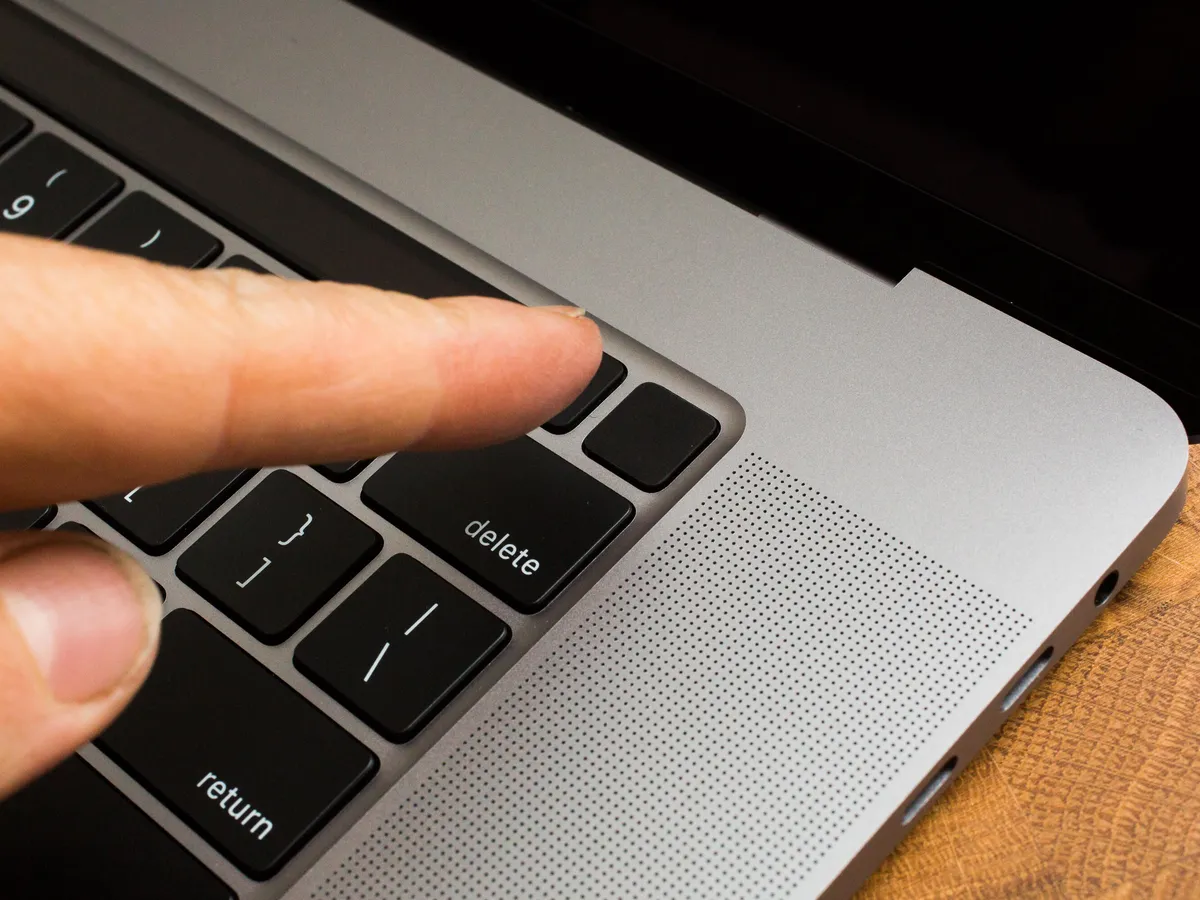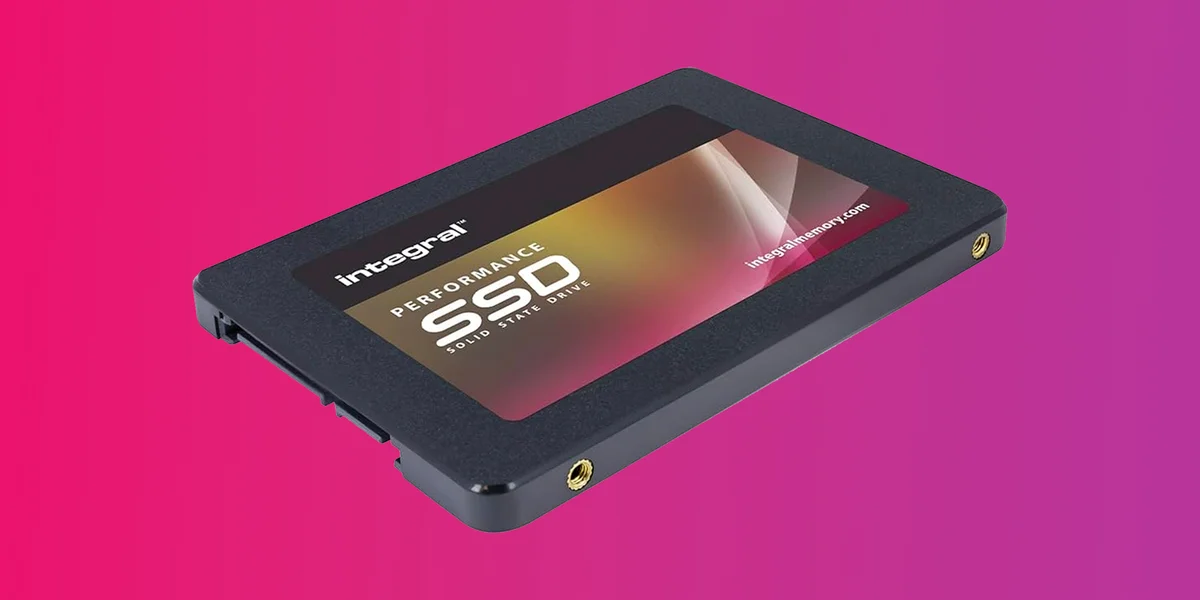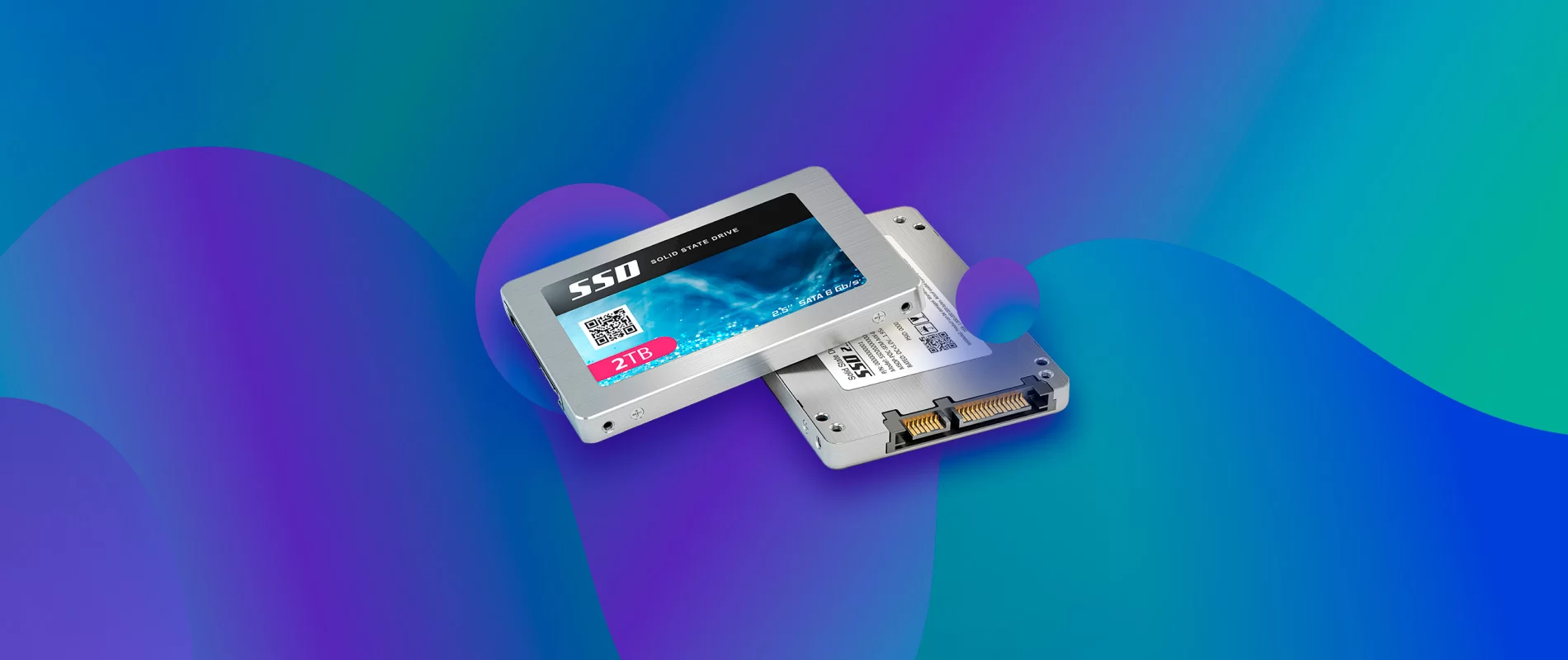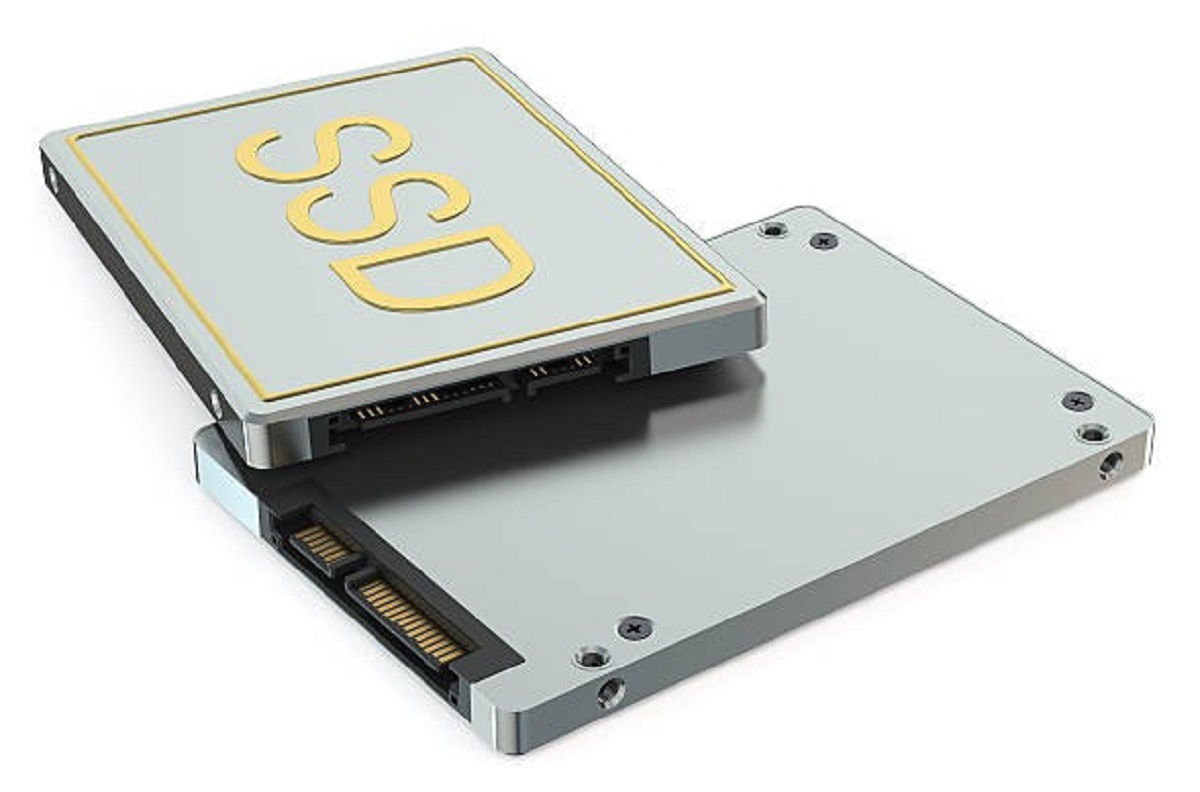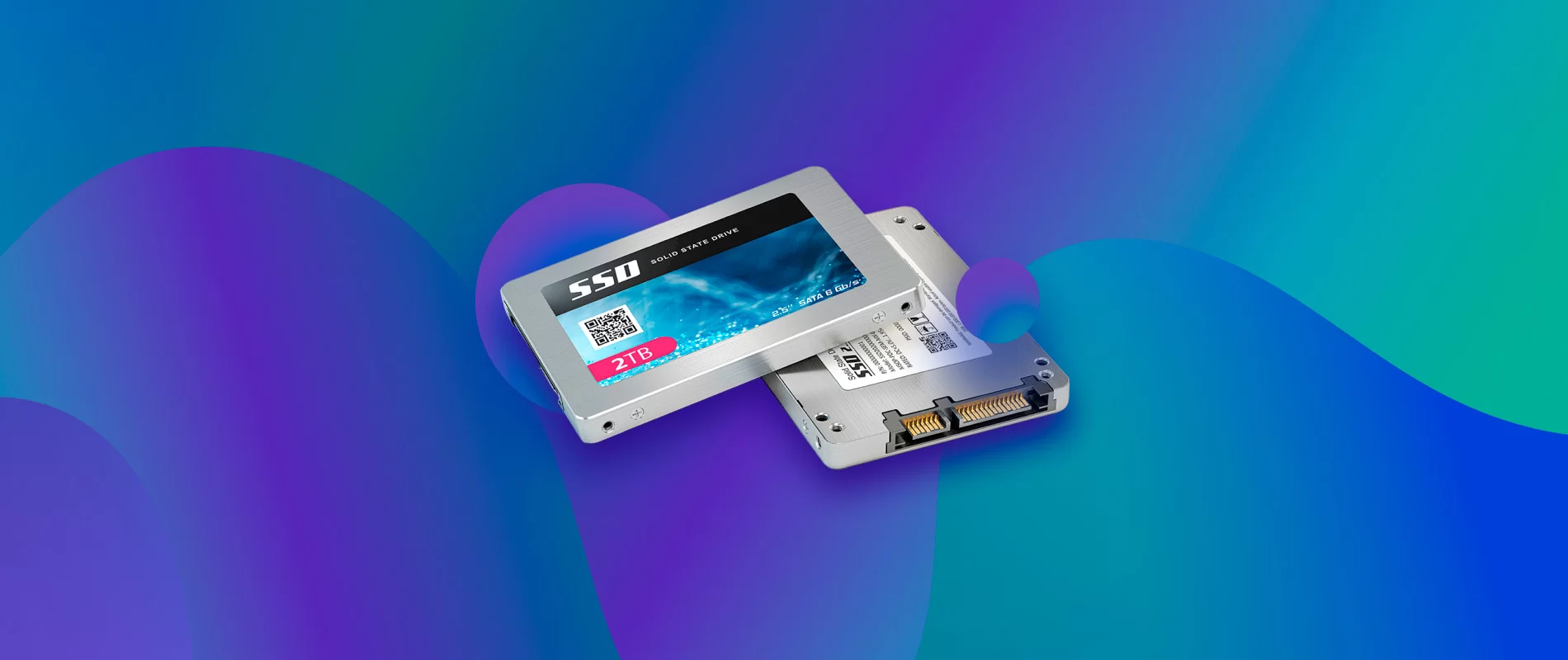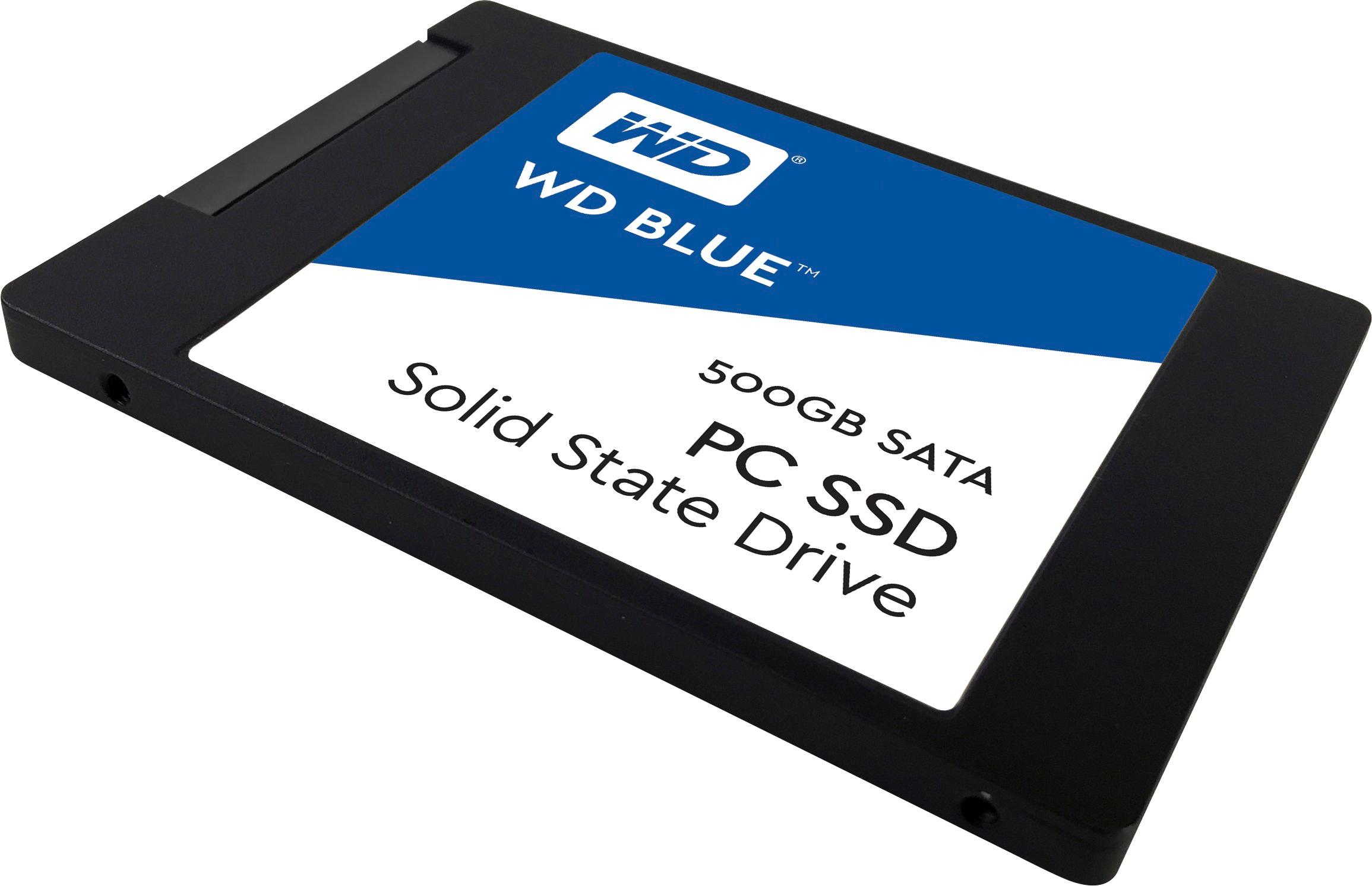Introduction
Welcome to the world of solid state drives (SSDs). These lightning-fast storage devices have revolutionized the way we store and access data. With their superior performance and reliability, SSDs offer a significant upgrade over traditional hard disk drives (HDDs). However, just like any other data storage device, SSDs need proper data erasure to ensure the confidentiality and security of sensitive information.
Whether you are selling, donating, or recycling your SSD, it is crucial to erase all the data stored on it completely. Failure to securely erase your SSD could lead to potential data breaches or unauthorized access to your personal information. In this article, we will explore the various methods of data erasure for SSDs and discuss the importance of protecting your data.
Understanding how SSDs work is essential to effectively erase data from them. Unlike HDDs, which use rotating magnetic platters to store data, SSDs employ integrated circuit assemblies to store information electronically. This fundamental difference in technology gives SSDs a distinct advantage in terms of speed, durability, and energy efficiency.
Data erasure on SSDs is a complex process due to the way they handle data storage internally. SSDs have wear-leveling algorithms and TRIM commands that distribute data evenly and securely erase it to prevent unauthorized recovery. Simply deleting files or formatting the drive is not enough to guarantee complete data removal on an SSD.
In the next sections, we will delve into the reasons why data erasure is crucial for SSDs, the precautions you should take before erasing data, and the different methods you can use to ensure secure data destruction. Let’s explore the world of SSD data erasure and protect your sensitive information.
Understanding Solid State Drives (SSDs)
Solid State Drives (SSDs) have become increasingly popular in recent years, offering a significant improvement in performance and reliability compared to traditional hard disk drives (HDDs). To understand the importance of data erasure for SSDs, it’s essential to have a good grasp of how they work.
Unlike HDDs, which store data on rotating magnetic platters, SSDs use flash memory chips to store information electronically. This design eliminates the moving parts found in HDDs, making SSDs faster, quieter, and less susceptible to physical damage.
SSDs consist of three key components: the controller, the NAND flash memory, and the interface. The controller acts as the brain of the SSD, managing data storage, retrieval, and overall performance. NAND flash memory, the primary storage medium, stores data in blocks of memory cells. The interface, usually SATA or NVMe, connects the SSD to the computer, enabling data transfer and communication.
One of the unique features of SSDs is wear-leveling. Flash memory cells have a limited lifespan and can only be written to and erased a finite number of times. Wear-leveling algorithms distribute data evenly across the memory cells, preventing any single cell from wearing out faster than others. This algorithm ensures a longer lifespan for the SSD by minimizing cell degradation.
TRIM is another important aspect of SSDs. When files are deleted or overwritten, the file system sends TRIM commands to the SSD, informing it which blocks of data are no longer in use. The SSD then marks these blocks as available for efficient data storage. This process helps maintain the SSD’s performance and ensures that deleted data cannot be easily recovered.
Understanding the inner workings of SSDs is crucial for a successful data erasure process. Unlike HDDs, where overwriting data multiple times was the standard method of erasure, a different approach is necessary for SSDs. Secure data erasure for SSDs requires techniques that take into account wear-leveling algorithms, TRIM commands, and the specific structure of flash memory.
Now that we have a basic understanding of SSDs, in the next section, we will explore why data erasure is essential for these storage devices and the potential risks of not securely deleting sensitive information.
Why is Data Erasure Important?
Data erasure is crucial to protect sensitive information and maintain privacy when disposing of or repurposing solid state drives (SSDs). Failure to securely erase data from an SSD can lead to serious consequences, including data breaches, identity theft, and unauthorized access to personal or confidential information.
When you delete a file from your SSD or format the drive, the data is not immediately removed. Instead, the file system marks the space previously occupied by the file as available for new data. Until that space is overwritten by new information, the old data remains intact and potentially recoverable.
The rise in data breaches and the value of personal information on the black market make it crucial to ensure that confidential data is not easily accessible. Organizations and individuals must take proactive measures to prevent data leakage and protect their reputation and financial stability.
When disposing of or selling an SSD, you need to ensure that all sensitive information is completely removed. This includes personal files, financial records, login credentials, and any other data that could be used to identify or impersonate you. A simple delete or format is insufficient as it leaves the data vulnerable to recovery by capable individuals or tools.
Data erasure also plays a vital role in compliance with privacy regulations such as the General Data Protection Regulation (GDPR) or the Health Insurance Portability and Accountability Act (HIPAA). These regulations require organizations to protect and securely dispose of sensitive customer information. Non-compliance can result in hefty fines and damage to the organization’s reputation.
Furthermore, recycling or repurposing SSDs without proper data erasure can inadvertently lead to the exposure of sensitive information to unauthorized parties. Even if you are personally committed to protecting your own data, failing to erase it before passing on the SSD can put others at risk.
Overall, data erasure is crucial for protecting sensitive information, maintaining compliance with regulations, and safeguarding against potential data breaches or identity theft. In the next section, we will discuss the precautions you should take before erasing data from your SSD to ensure a thorough and secure erasure process.
Precautions to Take Before Erasing Data
Before proceeding with data erasure on your solid state drive (SSD), it is important to take certain precautions to ensure a thorough and secure process. These precautions will help prevent accidental data loss, protect your system integrity, and ensure a smooth transition after the data erasure is complete.
The first precaution is to back up any important data that you want to keep. Data erasure is an irreversible process, and once it is complete, there is no way to recover the erased data. By creating a backup of your important files and documents, you can safely restore them to a different storage device or the same SSD after the data erasure is complete.
Next, it is essential to disconnect your SSD from any external power source and make sure it is properly disconnected from your computer or any other device. This step is crucial to prevent accidental data access or data corruption during the erasure process. Removing power ensures that no read or write operations can occur on the SSD, providing a secure environment for data erasure.
Another precautionary step is to update the firmware of your SSD before initiating the data erasure process. SSD manufacturers frequently release firmware updates that improve performance, reliability, and security. By updating the firmware, you ensure that your SSD is running the latest software, potentially reducing the risk of any vulnerabilities that could be exploited during the erasure process.
Furthermore, it is advisable to research and choose a reliable and reputable data erasure software or tool specific to SSDs. Not all erasure methods or software are created equal, and using a tool specifically designed for SSDs ensures that the erasure process is effective and secure. Make sure to read reviews, check for certifications, and follow the provided instructions to ensure a successful data erasure.
Lastly, make sure to follow any additional precautions or guidelines provided by the SSD manufacturer or the data erasure software. Each SSD model and erasure tool may have specific instructions or recommendations that should be followed to achieve optimal results and maintain the integrity of your SSD.
By taking these precautions before initiating the data erasure process, you can safeguard your data, minimize the risk of accidental data loss, and ensure a smooth and successful erasure. In the next section, we will explore the different methods of data erasure for SSDs.
Different Methods of Data Erasure
When it comes to securely erasing data from a solid state drive (SSD), there are several methods available, each with its own advantages and considerations. It is important to choose the most suitable method based on your specific requirements, the sensitivity of the data, and the nature of your SSD. Let’s explore the different methods of data erasure for SSDs.
1. Secure Erase: Secure Erase is a built-in feature of most modern SSDs. It allows you to erase all the data on the drive by effectively resetting it to its factory default state. This method ensures that all the cells are reset and ready for future use. Secure Erase is considered one of the most reliable and secure methods for erasing data from an SSD.
2. ATA Sanitize: ATA Sanitize is another method of data erasure that is available on some SSDs. It functions similarly to Secure Erase but differs in some implementation details. ATA Sanitize can be triggered by specific commands sent through the ATA interface to the SSD. This method ensures that all user data on the SSD is irrecoverably erased.
3. Encryption: Encrypting the data on your SSD is an effective way to ensure that even if the SSD falls into the wrong hands, the data remains secured. By encrypting the entire drive or specific partitions, you can render the data useless without the correct encryption key. When you want to dispose of the SSD, you can simply discard or delete the encryption key, effectively making the data on the SSD inaccessible.
4. Shredding: Shredding, or overwriting the entire drive with random data multiple times, was a common method used for HDDs. However, it is not as effective for SSDs due to their wear-leveling mechanisms. SSDs internally manage data storage, making it difficult to determine which specific cells have been overwritten. Though not recommended as the primary method for erasing SSDs, shredding can still provide an added layer of security when used alongside other erasure methods.
It is important to note that the effectiveness of data erasure methods may vary depending on the specific SSD model and firmware. Manufacturers may also have specific recommendations or tools for performing secure data erasure on their SSDs. It is always advisable to consult the SSD manufacturer’s documentation or support resources for the most accurate and up-to-date information.
In the next section, we will provide a detailed explanation of each data erasure method and guide you on how to implement them effectively for your SSD.
Method 1: Secure Erase
Secure Erase is a widely recognized and reliable method for erasing data from a solid state drive (SSD). Most modern SSDs come equipped with a built-in Secure Erase feature that enables you to reset the drive to its factory default state, effectively erasing all the data stored on it.
Secure Erase works by deleting and resetting all the cells on the SSD, ensuring that no trace of the previous data remains. Unlike traditional delete or format operations, Secure Erase directly targets the NAND flash memory cells, bypassing the file system. This ensures a more thorough and secure erasure, making data recovery extremely difficult, if not impossible.
Implementing Secure Erase depends on the capability and support provided by your SSD manufacturer. Typically, you can trigger the Secure Erase process through your computer’s BIOS or by using specialized SSD management software provided by the manufacturer.
Before proceeding with Secure Erase, it is crucial to ensure that all critical data has been backed up elsewhere. As Secure Erase permanently deletes all the data on the drive, there is no way to recover it once the process is complete. Take the time to carefully review and identify any important files or documents that should be preserved.
Once you have backed up your data, follow the specific instructions provided by your SSD manufacturer or refer to their documentation to trigger the Secure Erase process. The SSD will enter a state where all cells are erased and reset, returning the drive to its original, unallocated state.
It is important to note that the Secure Erase process may take some time to complete, depending on the size and capacity of your SSD. Be patient and allow the process to finish uninterrupted. Interrupting the Secure Erase process can lead to data corruption or an incomplete erasure, compromising the effectiveness of the method.
After the Secure Erase process is complete, you can begin using your SSD as if it were brand new. It is recommended to perform a fresh installation of the operating system and any necessary applications to ensure optimal performance and compatibility.
Remember that Secure Erase is a reliable method for data erasure on SSDs, but it may not be supported by all SSD models. In cases where Secure Erase is not available, consider exploring alternative methods such as ATA Sanitize or encryption to achieve secure data erasure.
In the next section, we will discuss Method 2: ATA Sanitize and how it can be used for effective data erasure on SSDs.
Method 2: ATA Sanitize
ATA Sanitize is another effective method for securely erasing data from a solid state drive (SSD). Similar to Secure Erase, ATA Sanitize is a built-in feature available on select SSD models. It provides a comprehensive and secure erasure process that renders the SSD’s data irrecoverable.
The ATA Sanitize command works by sending specific instructions to the SSD through the ATA interface. This command instructs the SSD’s firmware to erase all user-accessible data on the drive. Unlike Secure Erase, which deletes and resets individual memory cells, ATA Sanitize performs a cryptographic erase, making the data on the SSD practically unreadable.
Implementing ATA Sanitize requires support from both the SSD manufacturer and the operating system. While most modern SSDs support ATA Sanitize, it is crucial to check the manufacturer’s documentation or the SSD’s specifications to ensure compatibility.
Initiating the ATA Sanitize process differs depending on the specific SSD model and the software used for controlling the drive. Some SSD manufacturers provide dedicated software or utilities that allow you to trigger the ATA Sanitize command. Others may require you to enter specific commands in the operating system’s command line or BIOS interface.
Before performing ATA Sanitize, it is essential to back up any data on the SSD that you want to keep. As with other secure erasure methods, ATA Sanitize permanently deletes all the data on the drive. Once the process is complete, the data cannot be recovered. Take the time to carefully identify and preserve any important files or information.
Once your data is backed up, follow the instructions provided by the SSD manufacturer or consult their documentation to initiate the ATA Sanitize command. The SSD’s firmware will execute the cryptographic erase process, ensuring that all user-accessible data is irrecoverably erased.
Similar to Secure Erase, the ATA Sanitize process may take some time to complete, depending on the SSD’s capacity. It is important not to interrupt the process and allow it to finish uninterrupted. Interrupting ATA Sanitize may result in incomplete erasure or data corruption.
After ATA Sanitize is complete, you can use the SSD as if it were newly formatted and uninitialized. It is recommended to perform a fresh installation of the operating system and any necessary applications to optimize performance and ensure compatibility.
ATA Sanitize provides a secure and reliable method for erasing data from an SSD. However, it is essential to verify that your SSD model supports this feature and follow the manufacturer’s instructions carefully. In cases where ATA Sanitize is not available or practical, consider exploring alternative methods such as encryption or shredding.
Next, we will discuss Method 3: Encryption and how it can be utilized for data erasure on SSDs.
Method 3: Encryption
Encryption is an effective method for data erasure on solid state drives (SSDs). When you encrypt your SSD, you essentially scramble the data and render it unreadable without the correct encryption key. This ensures that even if someone gains access to the SSD, they won’t be able to decipher the data stored on it.
To implement encryption on your SSD, you have two options: full drive encryption or encrypting specific partitions. Full drive encryption encrypts the entire SSD, while partition encryption allows you to select specific partitions to encrypt.
Full drive encryption is an excellent choice if you want to protect all the data on your SSD. It encrypts everything on the drive, including the operating system, applications, and user files. This method provides a high level of security and ensures that all the data on the SSD is effectively protected.
On the other hand, partition encryption allows you to choose specific partitions to encrypt, while leaving others unencrypted. This option is useful if you want to isolate sensitive data or if you have specific partitions that don’t require encryption. By encrypting only specific partitions, you can strike a balance between security and convenience.
Implementing encryption on your SSD typically involves using encryption software or encryption features provided by your operating system. Many modern operating systems offer built-in encryption tools, such as BitLocker for Windows or FileVault for macOS. These tools allow you to encrypt the SSD and manage encryption settings.
Before encrypting your SSD, it is important to back up any important data. Encrypting the SSD involves a transformation process, and if something goes wrong during the encryption process, you may risk losing data. Backup ensures that you have a copy of your data in case any issues arise.
Once your data is securely backed up, follow the specific instructions provided by the encryption software or your operating system to enable encryption on your SSD. You may be prompted to set a password or passphrase, which will be required to access the encrypted data.
After encryption is enabled, any new data written to the SSD will be automatically encrypted. Existing data on the SSD will remain accessible but encrypted. To effectively erase the data on the SSD, you simply need to discard or delete the encryption key or passphrase. Without the correct key, the encrypted data becomes practically meaningless and inaccessible.
Encryption provides robust protection for your data, making it an effective method for data erasure on SSDs. However, it is important to remember to securely store and manage your encryption keys, as losing them could result in permanent data loss. Additionally, ensure that your encryption software or operating system is up to date to benefit from the latest security features.
In the next section, we will explore Method 4: Shredding and its potential use for data erasure on SSDs.
Method 4: Shredding
Shredding, or overwriting data multiple times, has traditionally been a common method for data erasure on hard disk drives (HDDs). However, using this method on solid state drives (SSDs) requires caution and understanding of their specific technology.
SSDs employ wear-leveling algorithms and manage data storage internally, making it challenging to determine the exact location of data on the drive. As a result, traditional shredding methods that rely on overwriting specific sectors of the drive multiple times may not be as effective for SSDs.
However, that does not mean shredding is completely ineffective for SSDs. It can still provide an additional layer of security when used alongside other data erasure methods, such as encryption or ATA Sanitize.
If you choose to use the shredding method, it is recommended to use specialized SSD shredding software that is specifically designed to overwrite the entire SSD with random data. This process ensures that all sectors of the SSD are overwritten, including any unallocated space that may contain remnants of previously deleted data.
When using SSD shredding software, be sure to follow the manufacturer’s instructions carefully and select the appropriate settings for the shredding process. The software will overwrite the data on the SSD multiple times, ensuring that the original information is effectively destroyed and unrecoverable.
It is important to note that shredding on SSDs can significantly impact the drive’s lifespan and performance. Continuous overwriting of the NAND flash memory cells can cause excessive wear and reduce the overall lifespan of the SSD.
Therefore, it is advisable to consider using shredding as a secondary method for erasing data on SSDs, particularly in cases where other methods such as Secure Erase or ATA Sanitize are not available or not practical. Using a combination of methods, such as encryption followed by shredding, can provide an added layer of protection and assurance.
Before proceeding with any data erasure method, ensure that you have backed up any important data from the SSD. Once the shredding process is complete, the data cannot be recovered, so it is crucial to make sure that you have preserved any necessary files or documents.
In summary, while shredding can be used for data erasure on SSDs, it is not as straightforward and effective as it is for HDDs. Consider shredding as a complementary method alongside other secure erasure techniques, and always ensure that you follow the manufacturer’s instructions and take necessary precautions to protect your data and SSD.
In the next section, we will provide a brief recap of the methods discussed and conclude the article.
Conclusion
Ensuring proper data erasure from solid state drives (SSDs) is essential to protect sensitive information, maintain compliance with regulations, and safeguard against potential data breaches. Throughout this article, we have explored different methods of data erasure for SSDs: Secure Erase, ATA Sanitize, Encryption, and Shredding.
Secure Erase and ATA Sanitize are built-in features on most modern SSDs and provide reliable and secure methods of data erasure. These methods reset the SSD to its factory default state, ensuring that all user-accessible data is erased and unrecoverable.
Encryption, on the other hand, provides robust protection by scrambling the data and rendering it inaccessible without the correct encryption key. Full drive encryption or encrypting specific partitions can be used to effectively erase data on SSDs and ensure confidentiality.
While shredding has been a common method for data erasure on hard disk drives, it is less straightforward for SSDs due to their wear-leveling algorithms. Shredding can still be used alongside other methods as an added layer of security, but caution should be exercised to minimize the impact on the SSD’s lifespan and performance.
Before proceeding with any data erasure method, it is crucial to back up important data and follow the instructions provided by the SSD manufacturer or the erasure software. This ensures that you preserve necessary files and documents and carry out the erasure process without interruptions or data loss.
By implementing secure data erasure methods, individuals and organizations can maintain the confidentiality of their sensitive information, comply with privacy regulations, and protect against unauthorized access to data. It is important to choose the most appropriate method based on the specific requirements, sensitivity of the data, and nature of the SSD.
Remember, protecting data goes beyond the erasure process. Regularly updating firmware, using strong passwords, and implementing robust security measures contribute to a comprehensive data protection strategy.
Thank you for joining us on this journey through SSD data erasure methods. We hope this article has provided valuable insights and guidance for securely erasing data from your SSDs and protecting your sensitive information.










